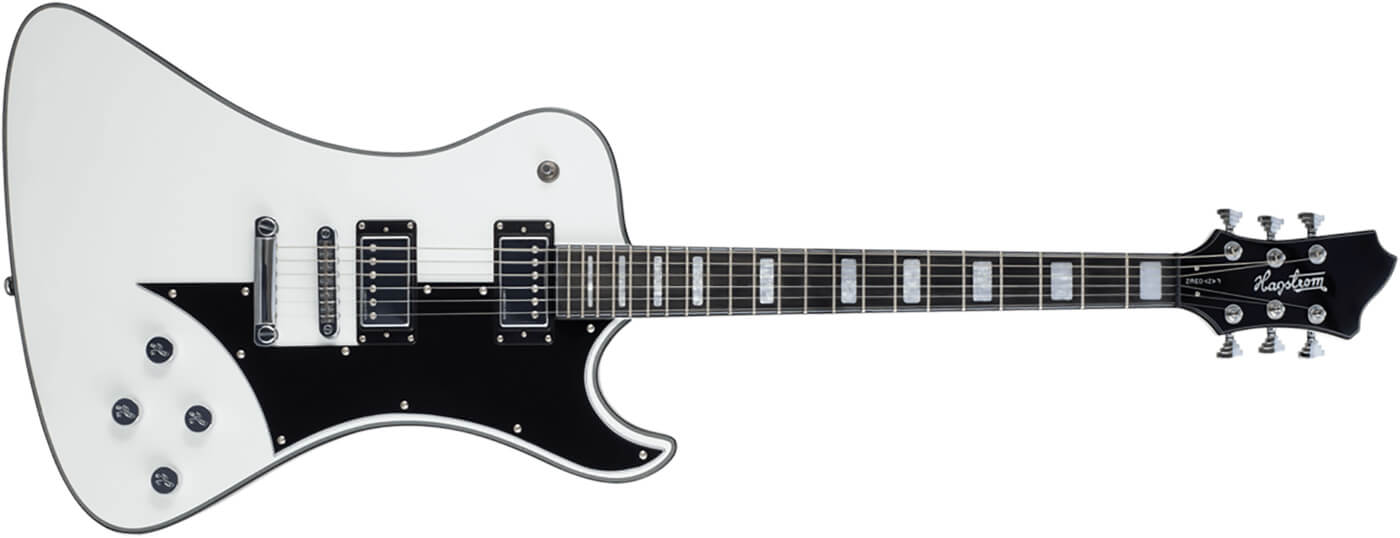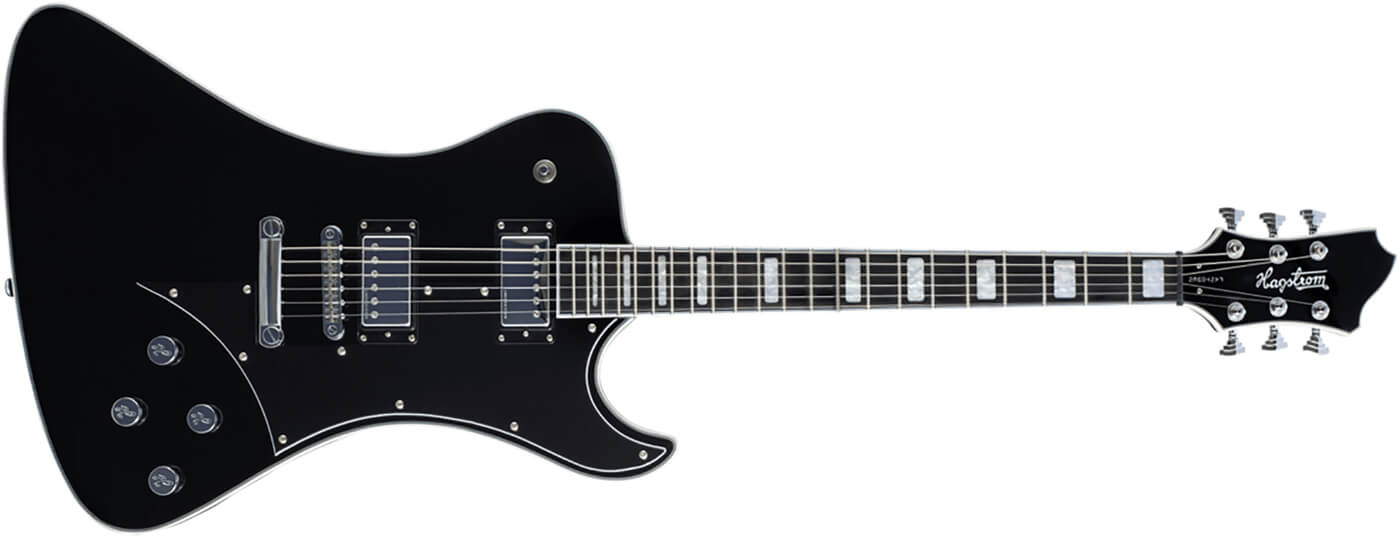Related Tags
The unusual origins of the Hagstrom Fantomen guitar
Co-designed by members of Swedish rock band Ghost, this Hagstrom instrument is a showcase for collaboration and tonal flexibility.

Image: Press
A decade after their debut, Ghost is still a band veiled in mystery. It serves their mythical narrative, then, that the band would use unique instruments on stage. Today the Nameless Ghoul guitarists play Hagstrom Fantomens, designed by Hagstrom general manager Craig Smith in collaboration with current and former members of the band.
The project’s inception was beset with struggles – namely, at the time, nobody knew who was in the band. Ultimately, though, the Fantomen became the band’s signature guitar based on the specifications and preferences of bandleader Tobias Forge and former guitarist Martin Persner, who was with Ghost until 2016. Persner had been rumored to be in the band for years, but Smith’s confirmation is the first from an outside source.
“I started asking around with various musicians here in Sweden, ‘Who are those guys in Ghost?’” says Smith, remembering how the project got started. “Very few people had a clue of their identities at that point, so it was not easy to make contact. Finally, I reached out to an old friend, Mathias [Kamijo, former Pain guitarist] in Linköping. I figured he must know who they were since they were living in the same town, and he did, but he had to contact them directly before handing over any information since their identities were such a secret. Not long after that, I got a call from Tobias and we started discussing the possibilities of working together.”

At that time, Forge and Persner were living in Linköping. Smith met the pair at Forge’s place to discuss the opportunity for collaboration.
“From the time we first met,” Smith says, “to discussing the design process – mostly while they were on tour over Skype calls and emails – until the first prototypes were completed, it came to close to a year. We went through a couple of totally different design concepts at first, but finally came to the Fantomen.”
When Smith first reached out to the band, they had been using Gibson RD guitars live. While the Fantomen retains some of the features of the RD, it also incorporates elements from several other models.
“We discussed a lot of the challenges that they experienced during touring and how to work around these issues,” Smith says. “I had also asked them what their ideal guitar would be, including such details as preferred woods, scale length, neck shape, body size, hardware, etc, and how to implement these details into a new model.”
Persner wanted a longer scale length, says Smith, because he grew up playing Strats. A longer scale length would make a massive difference to the instrument’s tone. Smith had to digest Forge and Persner’s preferences before he began spec’ing the instrument and drawing up what would eventually become the Fantomen.
“Ideally, since the earlier Ghost guitar tones were heavily influenced by 1970s rock, they also wanted something to compliment that sound on their previous albums. Ghost’s sound also started getting heavier on Meliora, which we also took into consideration.”
Smith drew up several designs but Forge fed back that he wanted something pointer, with more horns – something evil-looking. The result merged multiple design aspects drawn from different models.

“The lower horn has more of a nod to a Strat,” says Smith. “The upper bout takes influence from [Hagstrom’s] Ultra Swede, while the lower body is influenced by the RD. I was sitting looking at the design and thinking about Tobias’s request about horns, so I reversed our Hagstrom headstock design, which looked pretty awesome. I sent it over to the guys and they said, ‘I think that we have something here’.”
By this point, Ghost had been using pickups from Jönköping-based Lundgren for some time, including its Smooth Operator model. Founder Johan Lundgren had already designed pickups for Hagstrom, whose No.2 is close to the Smooth Operator.
“I was also a huge fan of his Suckerbucker in the bridge position, which our No.5 Lundgren Design pickup is modelled after,” says Smith. This made it a perfect match for the Fantomen.
The Fantomen features an alnico II (lower/mid output) in the neck which allows the tone to sing, and a more loaded alnico V in the bridge, which provides the wallop. Both blend perfectly with the all-mahogany guitar. With the option to split via the two push/pulls on the tone pots, the Fantomen offers a lot of tonal variation. Smith also spoke to Forge and Persner about adding piezos on the bridge for the track He Is, but the band figured that the tone was close enough by using just the neck and bridge pickups and splitting each.

Whenever a luthier designs a new guitar from scratch, there will be challenges. Smith faced several.
“I think that it was just trying to get all of the boxes checked of what they wanted, and to deliver a model that was really going to exceed their expectations,” he says. “When Martin got his, he contacted me and said, ‘This is the perfect guitar’. I told him that I hoped it would be, as all of their requests were taken into consideration. The entire design concept was a bit scary for us, as we have always had our foot in vintage guitar designs – Hagstrom originally being known as a vintage guitar brand, with roots going back to 1958 – and weren’t sure what the market would think.”
The market, or at least Ghost, took to the Fantomen like the Devil did to Hell. The guitar continues to serve as Ghost’s live six-string to this day.
For more features, click here.

